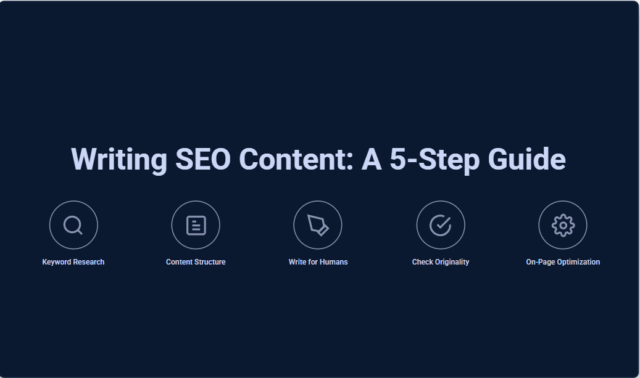The truth is, great writing alone isn’t enough. To get seen on Google, your content needs to be optimized for search engines. This is called SEO (Search Engine Optimization), and it’s not as complicated as it sounds.
This guide will give you a simple, 5-step framework to turn your ideas into SEO-friendly blog posts that are built to rank.

Step 1: Find Your Focus Keyword
Before you write a single word, you need to know what you want to rank for. A “focus keyword” is the main search term you want your article to appear for in Google.
Think about what your ideal customer would type into Google to find a solution to their problem. Is it “how to fix a leaky faucet” or “best running shoes for beginners”?
How to do it:
Use a keyword research tool to find terms with decent search volume and manageable competition. A great place to start is with a free tool, like the keyword research tools available right here on TurboSEOTools, to brainstorm ideas and see what people are actively searching for.
Step 2: Structure Your Content for Readers and Robots
Google and your readers have one thing in common: they both love well-organized content. A scannable structure makes your article easy to read and helps search engines understand its hierarchy.
How to do it:
- Use one H1 Tag: Your blog post title should be your only H1.
- Use H2s for Main Sections: Break your article into logical parts with clear H2 subheadings.
- Use H3s for Sub-Points: Use H3s for smaller points within your main sections.
- Keep Paragraphs Short: Aim for 2-3 sentences per paragraph.
This simple structure creates a great user experience, which is a powerful SEO signal.
Step 3: Write High-Quality, In-Depth Content
Now it’s time to write. The #1 rule of modern SEO is to write for humans first, search engines second. Your goal is to create the single best, most helpful resource on the internet for your chosen keyword.
Don’t just stuff your keyword everywhere. Instead, focus on comprehensively answering the user’s question.
But writing for today’s user isn’t enough; you must also be aware of where search is heading. As you become more advanced, you’ll need to understand concepts beyond simple keywords. A great resource from SEOSiri breaks down the evolution of search from SEO to GEO and AEO, showing how the landscape is shifting toward AI-driven answers.
Step 4: Check for Originality and Grammar
Nothing hurts your credibility and SEO more than duplicate content or sloppy grammar. Google penalizes plagiarism, and readers will lose trust if your article is full of errors.
How to do it:
Before publishing, run your final draft through a plagiarism checker tool to ensure its 100% original. This is a non-negotiable step for building a reputable blog. It’s also wise to use a grammar checker to catch any typos.
Step 5: Optimize Your On-Page Elements
You’ve written a great article. The final step is to add the finishing touches that tell Google exactly what your page is about.
Your Final Checklist:
- Title Tag: Make sure your focus keyword is in your title, preferably near the beginning.
- Meta Description: Write a compelling, 1-2 sentence summary of your post that includes your keyword and encourages a click.
- URL: Keep your URL short, readable, and include your keyword.
- Image Alt Text: Add a descriptive alt text to your images that explains what they are (and includes your keyword if it fits naturally).
SEO isn’t magic; it’s a process. By following these five steps, you can create high-quality content that is structured to perform well in search, attract the right audience, and grow your business. Now go get writing.
Author,
This content has been written by Momenul Ahmad.


